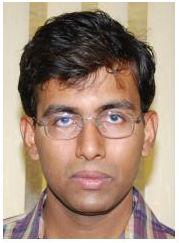
Anurag Gupta was born and raised in Lucknow before graduating from IIT Roorkee in 2002. This was followed by a Masters and a doctoral degree from University of California Berkeley in 2008. He thereafter joined IIT Kanpur as a faculty in the department of Mechanical Engineering. He is presently on leave from IIT Kanpur, working as an Associate Professor in the Department of Applied Mechanics at IIT Delhi. Anurag’s academic interests are in the broad areas of theoretical solid mechanics where he is primarily interested in modelling complex mechanical behaviour of solids using advanced mathematical methods. He has recently developed a serious interest in learning about Indian musical instruments, both from scientific and historical viewpoints. Besides his academic activities, Anurag is passionate about collecting books of certain genres and wandering off in Himalayan wilderness.
Abstract of the lectures
In the first lecture, I will give an introductory lecture on physics of Indian Musical Instruments. The emphasis will be on highlighting the unique design features in some of our musical instruments, discussing their history, and also exposing simplistic mathematical models using which these can be studied systematically. We will restrict our attention to percussion instruments such as Tabla and Iddakka, and the drone instrument Tanpura. I will also discuss the historicity of these unique design features in classical Indian musical instruments.
In the second lecture, I will discuss aspects of acoustics in ancient India by concentrating on two problems. The first is of reconstructing ancient Indian musical instruments. In this respect, I will present some of our recent work on reconstructing Ektantri Vina, a popular Vina between the 10th and 15th centuries CE. We will deliberate on lessons to be learnt in science, technology, and archeology from such an exercise. Secondly, I will introduce architectural acoustics with special reference to Indian temples. My aim will be to motivate the importance of acoustics as an essential architectural element in building ancient Indian temples. I will emphasize open research avenues and challenges in both of these pursuits.